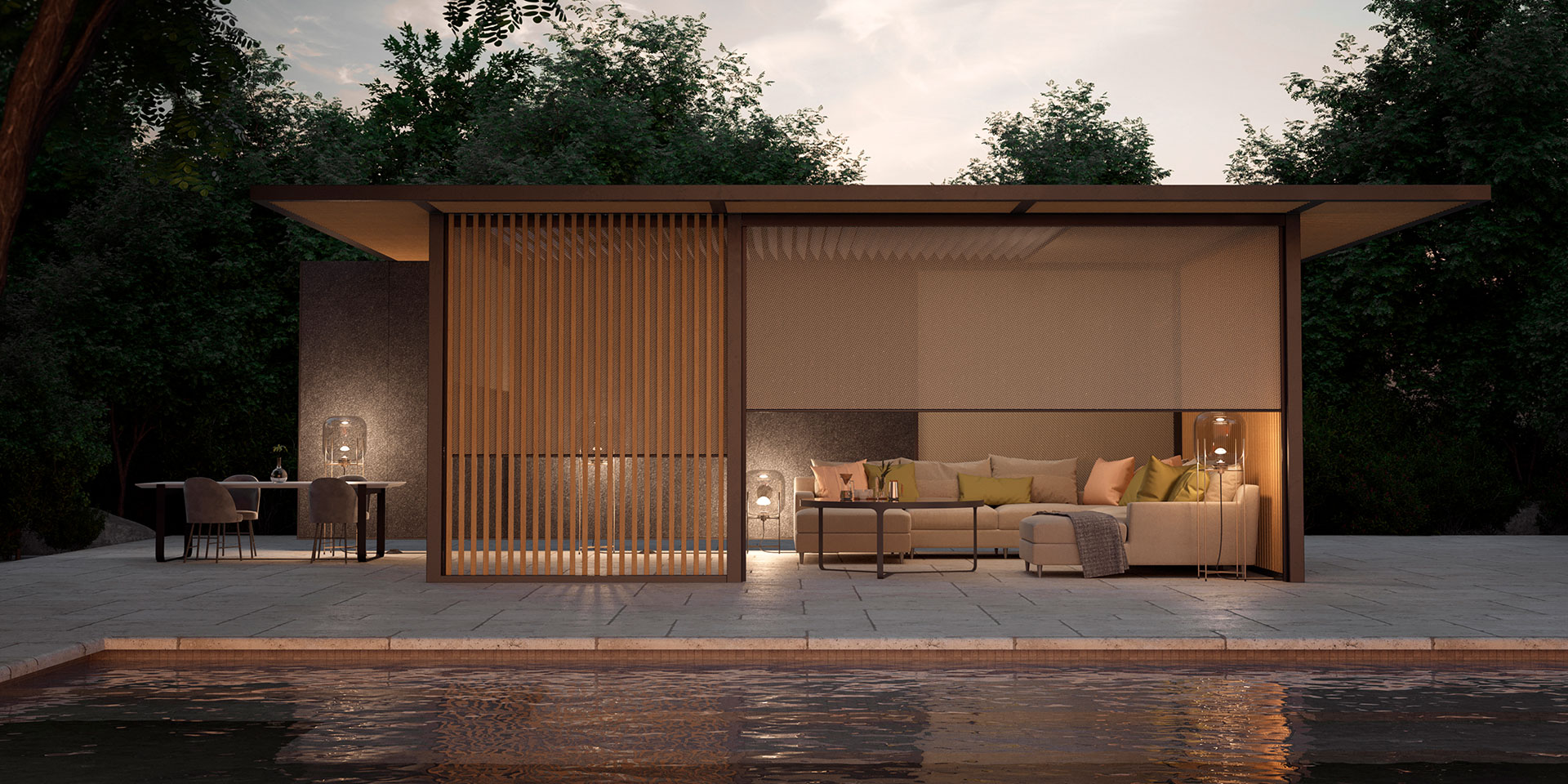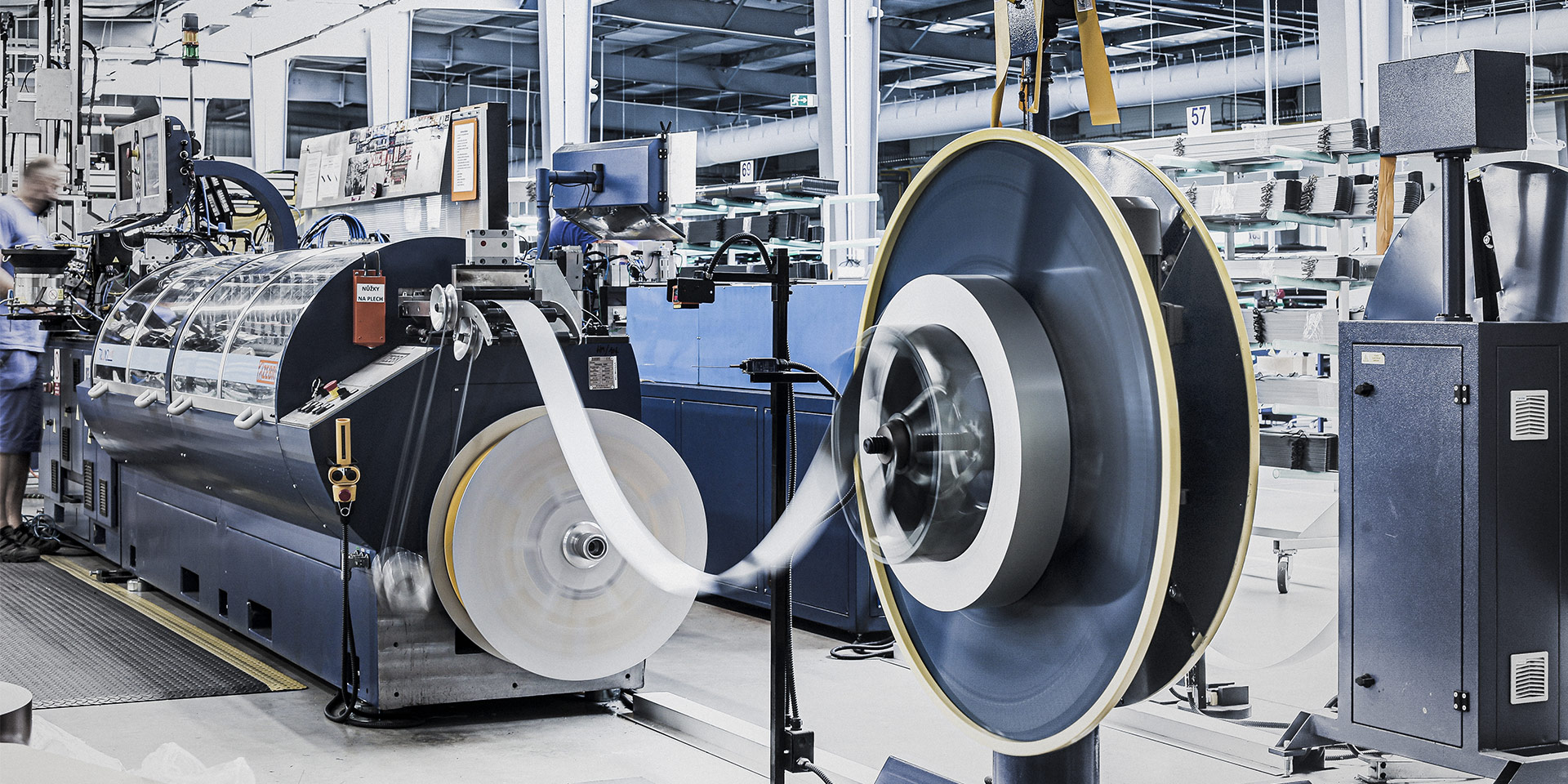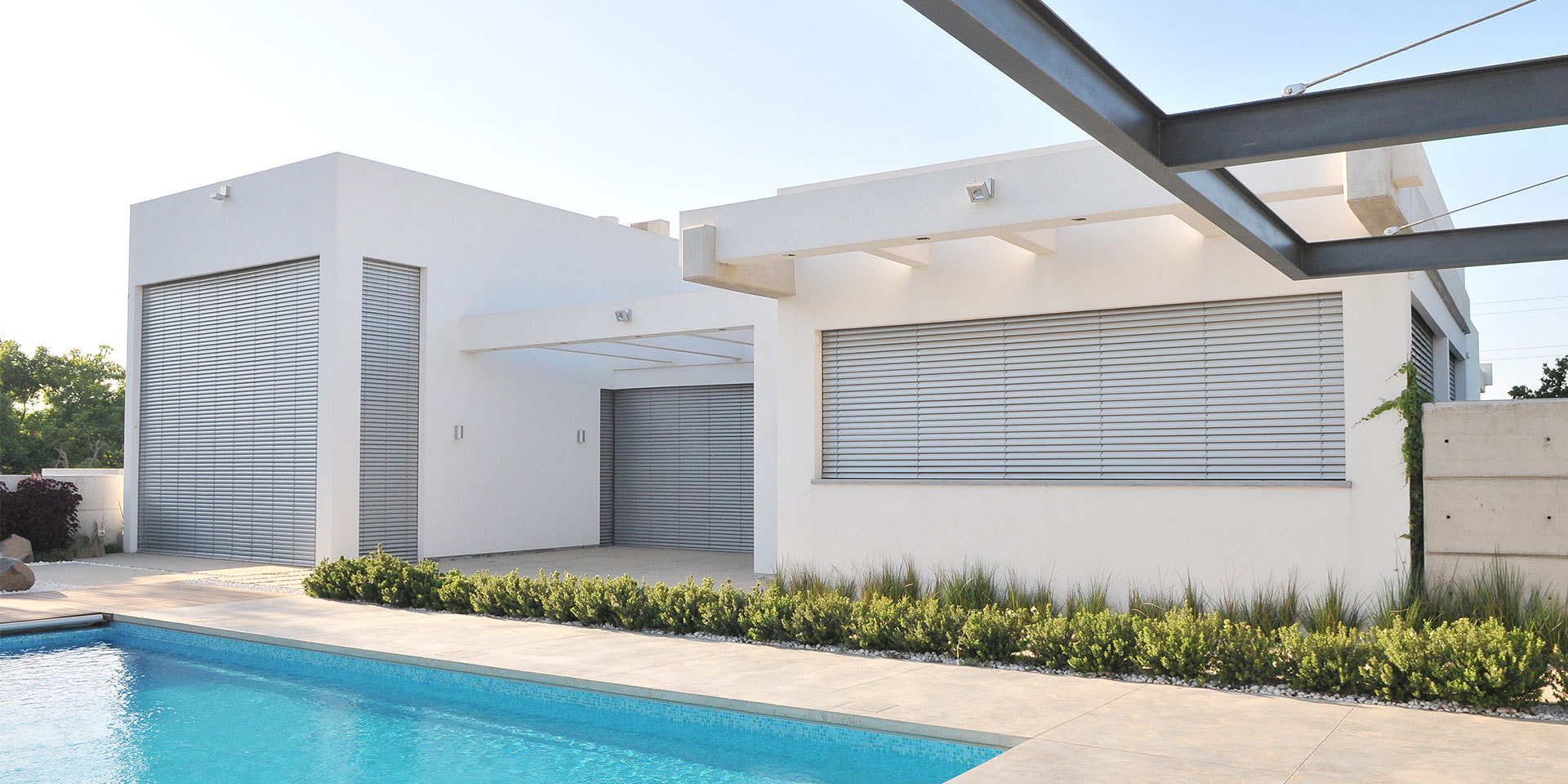The big comparison: external blinds vs. screen roller shutters
Based on the most frequent questions, we compared two popular types of external shading. We took a practical and objective look at parameters such as light control, insulation properties, durability, service life and more. We hope this will help you make your choice.
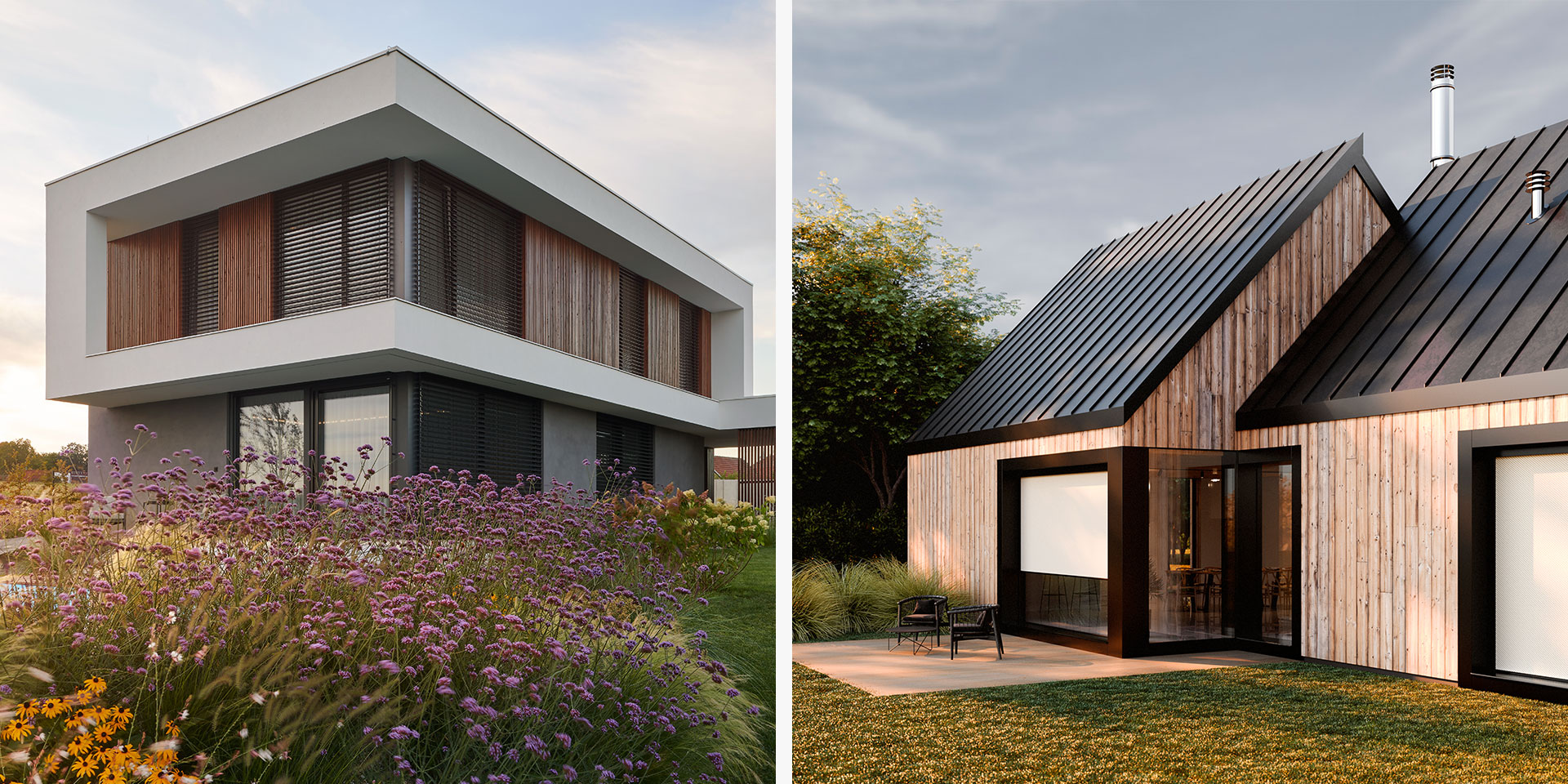
If you don’t already have a good grasp of the different types of external shading, we recommend starting with our article, where we’ve highlighted the basic features of
- external blinds,
- aluminium roller shutters,
- screen roller shutters,
- and awnings.
We will now focus only on the differences between external textile screens and external blinds.
Quick navigation
Blackout level
With screens, you only select the blackout level once — when you are choosing the fabric during your purchase. You can only adjust it further by pulling it up and down.
From this point of view, the key parameter is the light (solar) transmittance, which covers values from 0 to 40% and determines how much light the fabric lets in:
- the strongest darkening fabrics (called blackout) have a transmittance of 0% and create absolute darkness in the room,
- strongly darkening fabrics from 1 % to 22 %,
- and slightly darkening fabrics from 23 % to 40 %.
Therefore, do not underestimate the choice of fabric for screens.
With external blinds, you can control the darkening intensity much more easily by tilting the slats. When the slats are fully tilted (blacked out), you can create almost perfect darkness in the room.
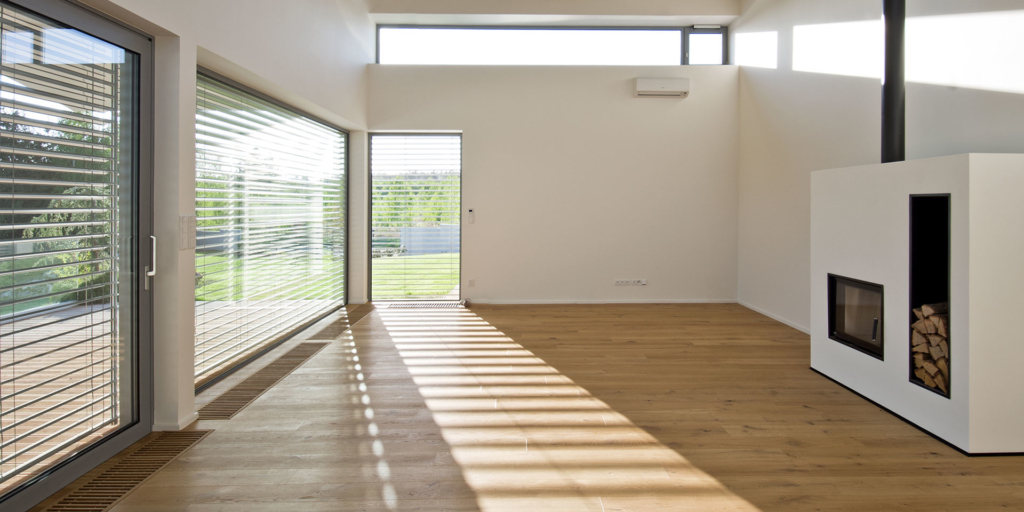
Insulation properties
Thermal transmittance
Aluminium blinds create a thicker barrier in front of the window pane, so the temperature in the room is actually lowered more (by up to 10°C). But screens don’t do badly either. The biggest difference can be felt in a south-facing room, where the cooling effect of screens will be weaker than that of blinds.
Sound insulation
If you have windows facing a busy street, we recommend that you opt for external blinds. This barrier not only insulates against heat well, but also partially insulates against sound.
Privacy
Screens have the great feature that you can’t see through them from the outside in. That’s why some people get them. But this is only true during the day — in the evening, when you turn on the lights, people can see inside.
Therefore, from a privacy perspective, blinds are better, as they create a barrier regardless of the outside light conditions.
Wind resistance
Screens are more wind resistant than blinds. Based on resistance testing, we guarantee that wind speeds of up to 88 km/h can be withstood by:
- zipscreens up to 1.6 metres wide
- and blinds only up to 1 metre wide.
That’s why screens are ideal for larger areas and especially for pergolas where it doesn’t matter whether the wind pushes against them from both sides.
Blinds are slightly noisier in the wind, but they may have a rubber seal or elliptical pin on the bottom of the slats to reduce the noise. Blinds should be protected against high winds by pulling them into their box (this is best done with sensors that pull the blinds out automatically).
What building do you want to shade
- Single-family home or flat
If you are still in the design phase, we recommend that you consult an architect and have a visualisation prepared. Some people find that the blinds look too dominant on the house and prefer to go for the cleaner design of screens.
“You can also combine shading — depending on which direction the room faces or the purpose of the room. For example, for rooms where you need to sleep during the day, I would recommend a black-out roller shutter. For living rooms and kitchens, blinds are more suitable, as the tilting of the slats allows you to better regulate the light in the room,” advises Lukáš Musil, NEVA sales representative.
Blinds are popular for modern homes and are often chosen in grey, silver or anthracite. For inspiration, read an interview with an architect.
- Offices
When choosing shading for an office, think about the type of work and the needs of the employees. Blinds are popular for IT offices, for example, because they allow you to screen out light to the ceiling or floor and control it so it doesn’t shine on your monitor, but at the same time, there is enough light in the room so that plants, for example, can thrive.
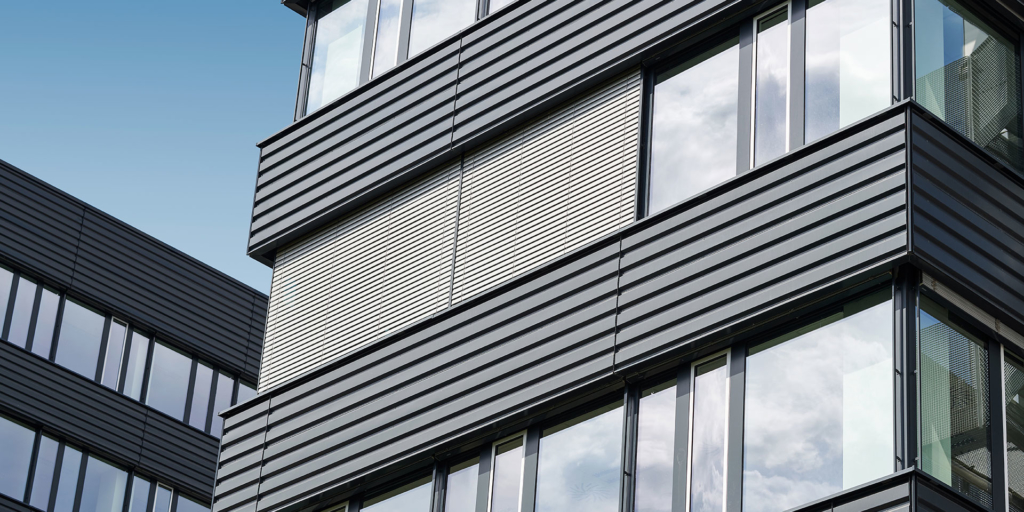
But if you are shading large glazed areas, consider choosing screen roller shutters. These can be made in larger sizes, look better and are also more durable.
- Conservatory, terrace or pergola
For a pergola, terrace or conservatory we always recommend screens, which have better properties in larger sizes. They are better able to withstand wind gusts in the open.
Read more about why we don’t recommend blinds for pergolas in this article. »
Installation options
On the market you will find both blinds and roller shutters that offer identical installation options — in the lining, on the window frame or projecting in front of the façade. Mounting can be both visible and concealed. Our blinds can be installed in all ways, but as regards screens for the time being we only supply the components for visible mounting.
Service life and warranty
Blinds contain multiple small components (ladders, strips, pins) that are theoretically more susceptible to damage. However, at NEVA we use metal and Kevlar components which have very good properties and durability.
With screen roller shutters it is even easier, you only have PVC-coated fabric, which does not suffer from wear and tear too much.
In any case, for both types of shading, we recommend getting wind sensors, which will pull the blinds or roller shutters into the box in bad weather so they don’t get damaged.
“If, for example, a screen gets wet or even freezes in winter, you need to let it dry completely before pulling it back into the box. A wet screen is heavy and could damage the motor,” adds Musil
You will receive an extended warranty of 2+2 years on our aluminium blinds and screen roller shutters.
Maintenance
- We recommend vacuum-cleaning or dusting the screens 2 times a year and then rinsing them with soapy water. You can also use a pressure cleaner using the lowest power setting. We have covered more about screen maintenance in this article. »
- External blinds also only need to be washed 2 times a year. You can also use a pressure cleaner or a garden hose to rinse them, but after that you need to wash the blinds with soapy water slat by slat. You can find a complete guide to cleaning blinds here. »
Security
“If you’re dealing with security, psychologically and visually, blinds can work better. But if a thief wants to break in, he will always find a way — he will cut the fabric strips between the slats or cut the fabric of the screens,” says Jakub Řičánek, sales representative of NEVA.
An effective measure to increase security is smart home control. Based on the modes and scenarios you set, the blinds and roller shutters will pull themselves up and down even when you are not at home. From the outside it looks like there is always movement in the house. And it doesn’t matter if you have blinds or roller shutters.
If you want to guard your property really thoroughly, you can go for special security blinds or roller shutters with locks. This measure is also recognised by insurance companies in case of theft.
Cost
In general, external blinds are cheaper than screens. However, the price of blinds or roller shutters depends on many factors and each customer receives a tailored quote. It depends mainly on:
- type of fabric or shape of slats,
- dimensions (there is no fixed price per m², it varies according to the ratio between the width and height of the window),
- installation method (visible boxes are cheaper than flush mounting, there are also façade and self-supporting systems),
- or colour (choose from standard swatches or atypical shades, which are to order only).
For a more specific idea, check out our earlier blog articles: we’ve written about the price of screens as well as how much external blinds cost.
Design and variability
Slat rolls for blinds are supplied as standard in 22 colour variants with the possibility of ordering almost any atypical colours. The slat shapes can also vary — they can be rounded (S, C) or sharp (Z). Along with the slat shape, the shading properties also vary — e.g. C‑type slats can be tilted up to 180°, while S- and Z‑shaped slats can only be tilted 90°.
The range of colours for screens is more limited, with 21, rather neutral, shades to choose from as standard. However, unlike blinds, you can choose a two-colour screen, with a different colour on each side.
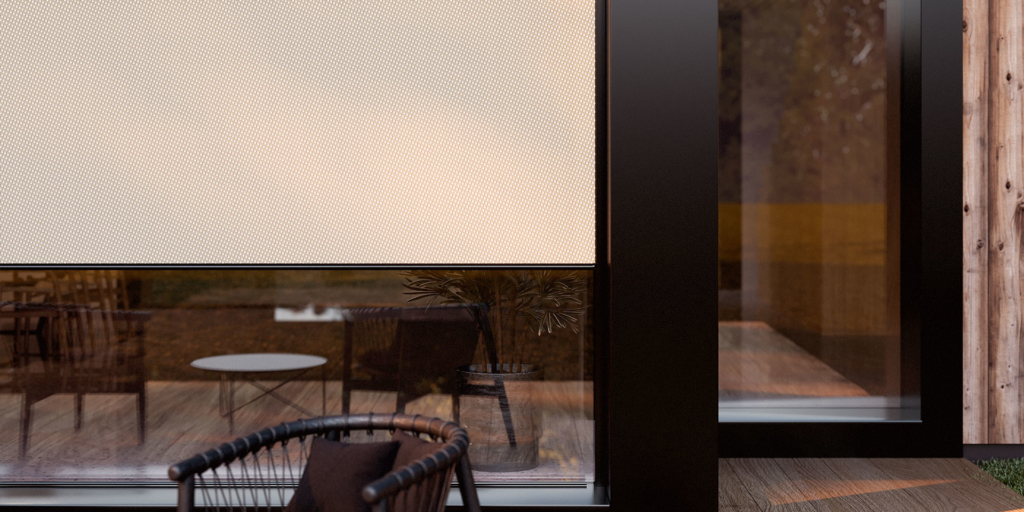
The decision is solely up to you
Both types of shading have their pros and cons. Now it’s just a matter of which aspects are more important to you.
If you want more in-depth advice on choosing a shading system, contact our partners at .

